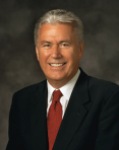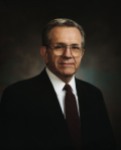We had several students ask questions about repentance in class after our discussions surrounding the downfall of Saul, David and Solomon. Some questions revolved around those who battle with the same sin repeatedly as well as how repentance works. One student asked, “what if you have done something you cannot fix?” President Packer’s teaching (see quote #5) is helpful in answering this question.
1. Repeatedly struggling
 Sometimes in our repentance, in our daily efforts to become more Christlike, we find ourselves repeatedly struggling with the same difficulties. As if we were climbing a tree-covered mountain, at times we don’t see our progress until we get closer to the top and look back from the high ridges. Don’t be discouraged. If you are striving and working to repent, you are in the process of repenting. As we improve, we see life more clearly and feel the Holy Ghost working more strongly within us.” (Elder Neil L. Andersen from “Repent . . . That I May Heal You”
Sometimes in our repentance, in our daily efforts to become more Christlike, we find ourselves repeatedly struggling with the same difficulties. As if we were climbing a tree-covered mountain, at times we don’t see our progress until we get closer to the top and look back from the high ridges. Don’t be discouraged. If you are striving and working to repent, you are in the process of repenting. As we improve, we see life more clearly and feel the Holy Ghost working more strongly within us.” (Elder Neil L. Andersen from “Repent . . . That I May Heal You”
General Conference October 2009)
2. Blood of Christ is what cleanses us
 “It is not repentance per se that saves man. It is the blood of Jesus Christ that saves us. It is not by our sincere and honest change of behavior alone that we are saved, but ‘by grace that we are saved, after all we can do’ (2 Nephi 25:23). True repentance, however, is the condition required so that God’s forgiveness can come into our lives.” [Elder Dieter F. Uchtdorf, “Point of Safe Return” General Conference April 2007 (Ensign, May 2007, p. 101)]
“It is not repentance per se that saves man. It is the blood of Jesus Christ that saves us. It is not by our sincere and honest change of behavior alone that we are saved, but ‘by grace that we are saved, after all we can do’ (2 Nephi 25:23). True repentance, however, is the condition required so that God’s forgiveness can come into our lives.” [Elder Dieter F. Uchtdorf, “Point of Safe Return” General Conference April 2007 (Ensign, May 2007, p. 101)]
3. No sin greater than Christ’s atonement
 “The gospel teaches us that relief from torment and guilt can be earned through repentance. Save for those few who defect to perdition after having known a fulness, there is no habit, no addiction, no rebellion, no transgression, no offense exempted from the promise of complete forgiveness. ‘Come now, and let us reason together, saith the Lord: though your sins be as scarlet, they shall be as white as snow; though they be red like crimson, they shall be as wool.’ That is, Isaiah continued, ‘if ye be willing and obedient ‘ (Isaiah 1:18-19). Even that grace of God promised in the scriptures comes only “after all we can do” (2 Ne. 25:23). [President Boyd K. Packer “The Brilliant Morning of Forgiveness”, General Conference October 1995 (Ensign, Nov. 1995, p. 18)]
“The gospel teaches us that relief from torment and guilt can be earned through repentance. Save for those few who defect to perdition after having known a fulness, there is no habit, no addiction, no rebellion, no transgression, no offense exempted from the promise of complete forgiveness. ‘Come now, and let us reason together, saith the Lord: though your sins be as scarlet, they shall be as white as snow; though they be red like crimson, they shall be as wool.’ That is, Isaiah continued, ‘if ye be willing and obedient ‘ (Isaiah 1:18-19). Even that grace of God promised in the scriptures comes only “after all we can do” (2 Ne. 25:23). [President Boyd K. Packer “The Brilliant Morning of Forgiveness”, General Conference October 1995 (Ensign, Nov. 1995, p. 18)]
4. Repentance is not a checklist
 Repentance requires a seriousness of purpose and a willingness to persevere, even through pain. Attempts to create a list of specific steps of repentance may be helpful to some, but it may also lead to a mechanical, check-off-the-boxes approach with no real feeling or change. True repentance is not superficial. The Lord gives two overarching requirements: “By this ye may know if a man repenteth of his sins—behold, he will confess them and forsake them” (D&C 58:43).
Repentance requires a seriousness of purpose and a willingness to persevere, even through pain. Attempts to create a list of specific steps of repentance may be helpful to some, but it may also lead to a mechanical, check-off-the-boxes approach with no real feeling or change. True repentance is not superficial. The Lord gives two overarching requirements: “By this ye may know if a man repenteth of his sins—behold, he will confess them and forsake them” (D&C 58:43).
Confessing and forsaking are powerful concepts. They are much more than a casual “I admit it; I’m sorry.” Confession is a deep, sometimes agonizing acknowledgment of error and offense to God and man. Sorrow and regret and bitter tears often accompany one’s confession, especially when his or her actions have been the cause of pain to someone or, worse, have led another into sin. It is this deep distress, this view of things as they really are, that leads one, as Alma, to cry out, “O Jesus, thou Son of God, have mercy on me, who am in the gall of bitterness, and am encircled about by the everlasting chains of death” (Alma 36:18).
With faith in the merciful Redeemer and His power, potential despair turns to hope. One’s very heart and desires change, and the once-appealing sin becomes increasingly abhorrent. A resolve to abandon and forsake the sin and to repair, as fully as one possibly can, the damage he or she has caused now forms in that new heart. This resolve soon matures into a covenant of obedience to God. With that covenant in place, the Holy Ghost, the messenger of divine grace, will bring relief and forgiveness. One is moved to declare again with Alma, “And oh, what joy, and what marvelous light I [do] behold; yea, my soul [is] filled with joy as exceeding as was my pain!” (Alma 36:20). (Elder D. Todd Christofferson, The Divine Gift of Repentance, October 2011 Conference)
5. Healing the wound you cannot heal
 To earn forgiveness, one must make restitution. That means you give back what you have taken or ease the pain of those you have injured.
To earn forgiveness, one must make restitution. That means you give back what you have taken or ease the pain of those you have injured.
But sometimes you cannot give back what you have taken because you don’t have it to give. If you have caused others to suffer unbearably—defiled someone’s virtue, for example—it is not within your power to give it back.
There are times you cannot mend that which you have broken. Perhaps the offense was long ago, or the injured refused your penance. Perhaps the damage was so severe that you cannot fix it no matter how desperately you want to.
Your repentance cannot be accepted unless there is a restitution. If you cannot undo what you have done, you are trapped. It is easy to understand how helpless and hopeless you then feel and why you might want to give up, just as Alma did.
The thought that rescued Alma, when he acted upon it, is this: Restoring what you cannot restore, healing the wound you cannot heal, fixing that which you broke and you cannot fix is the very purpose of the atonement of Christ.
When your desire is firm and you are willing to pay the “uttermost farthing,” the law of restitution is suspended. Your obligation is transferred to the Lord. He will settle your accounts. (President Boyd K. Packer, The Brilliant Morning of Forgiveness, Ensign 1995)

I rediscovered Elder Packer’s “Brilliant Morning of Forgiveness” about 2 years ago, after a life of joyful activity in the Church. I have listened to it probably 20 times now. It has brought me, finally, to real repentance. Today I was searching for confirmation, 2nd & 3rd authorized latter-day witnesses, of the powerful doctrines that he taught there. You have provided a few.
I am searching for the difference between forgiveness, which follows repentance, and remission, which follows the covenants of baptism. It seems a very important, fruitful question.